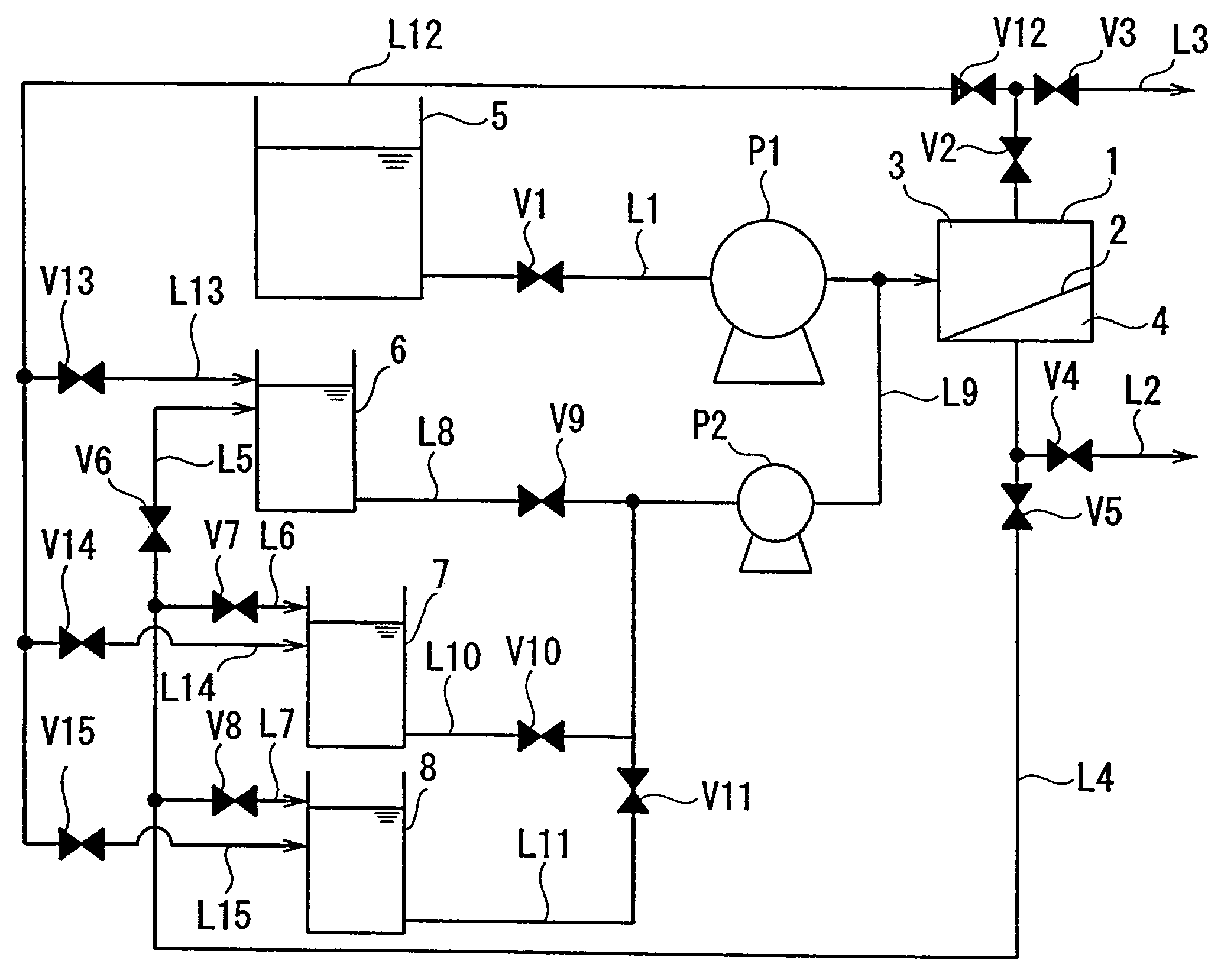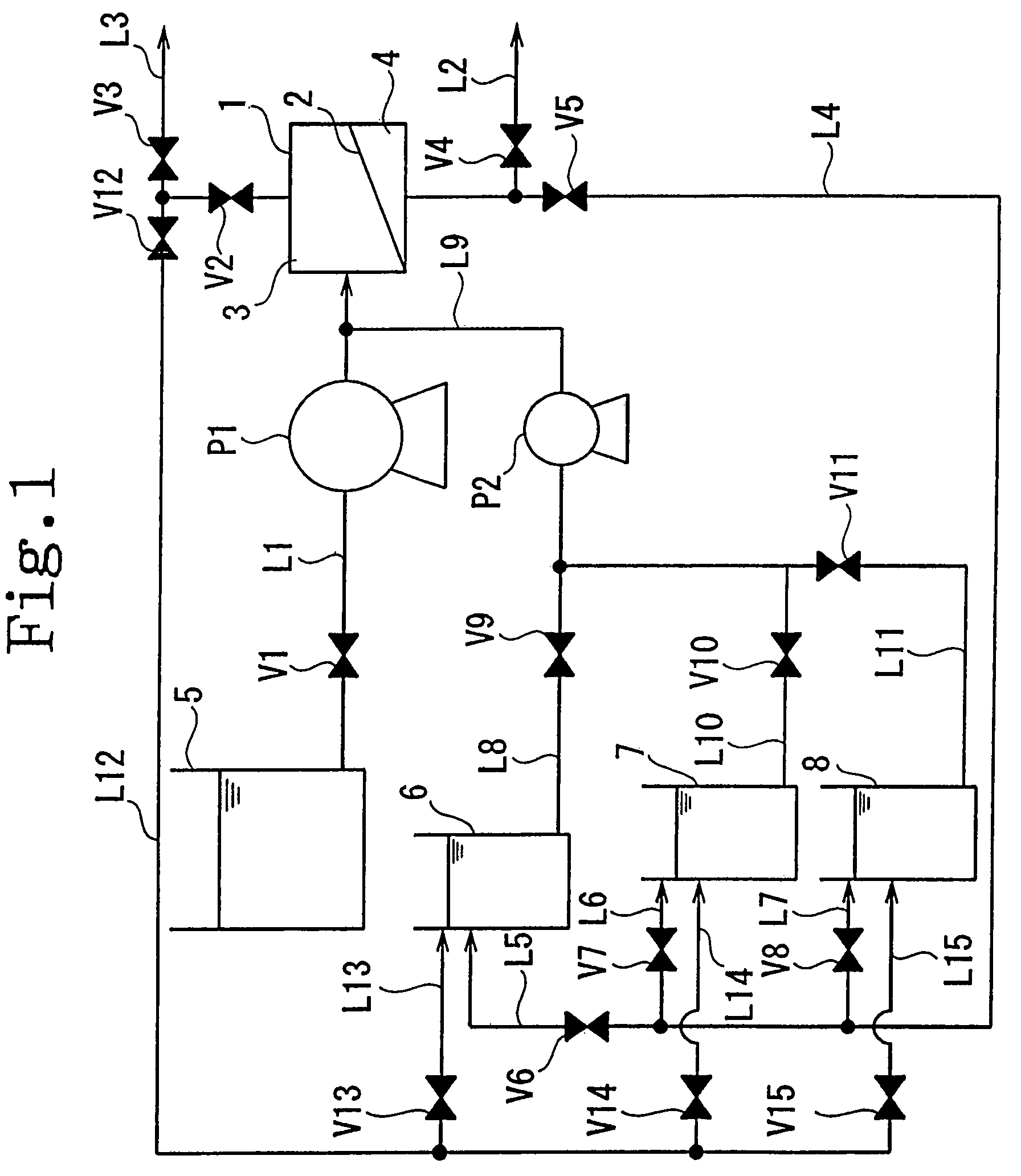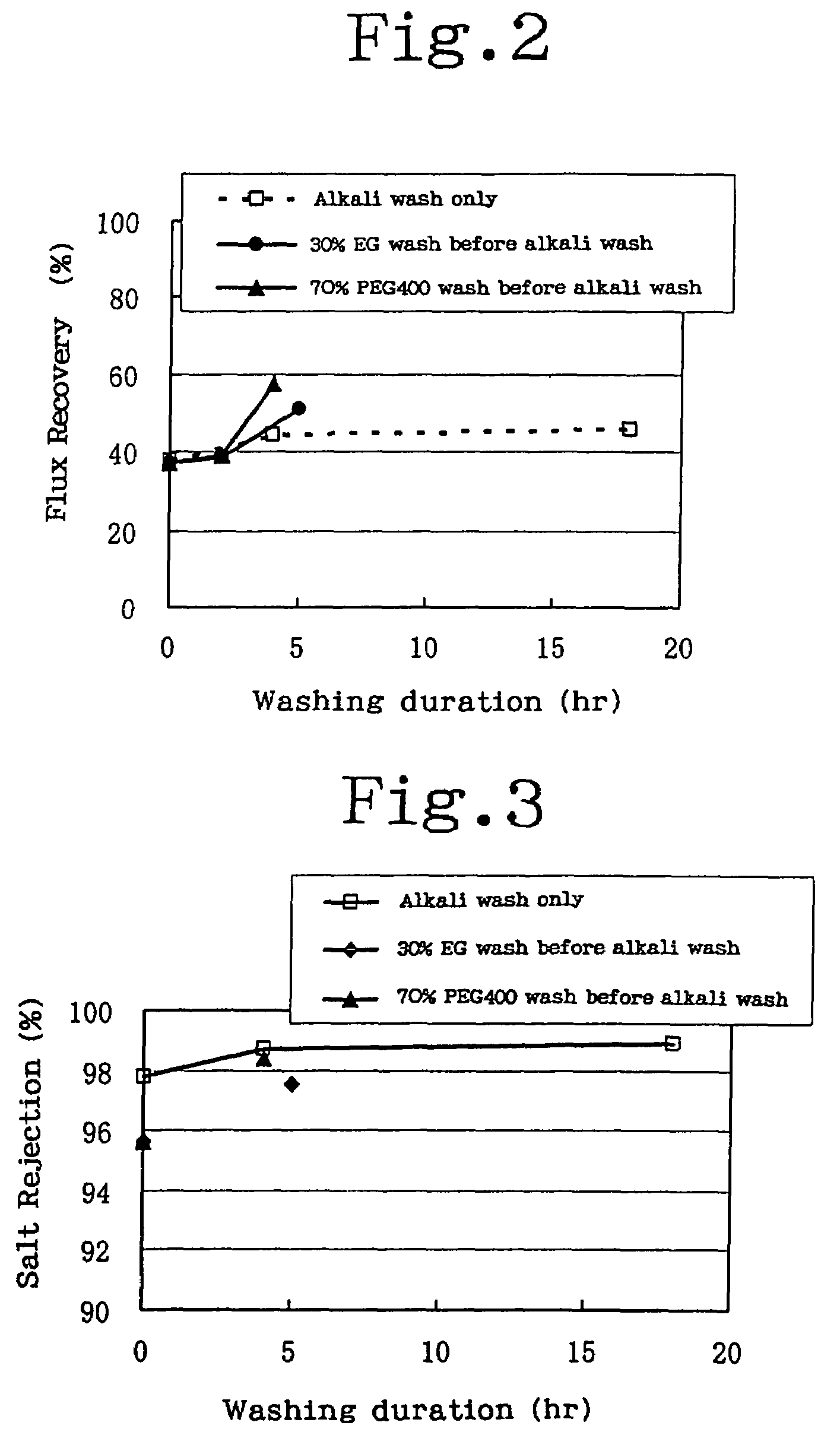Detergent for washing a selectively permeable membrane and method of washing
a technology of detergent and permeable membrane, which is applied in the direction of detergent compounding agents, cleaning using liquids, instruments, etc., can solve the problems of reducing the selective permeability, deterioration of the membrane or the membrane module, and the technique is not applicable to practical apparatuses, so as to prevent the elution of contaminants in the subsequent treatment course, the detergent effect is high, and the effect of ensuring the safety of peopl
- Summary
- Abstract
- Description
- Claims
- Application Information
AI Technical Summary
Benefits of technology
Problems solved by technology
Method used
Image
Examples
example 4
[0048]A treatment was carried out under the same condition as in EXAMPLE 3 for a waste water (with a TOC of 20 mg / liter or less) from a machine parts production factory as the liquor-to-be-treated, whereby the flux was decreased and, therefore, a liquid mixture of 70 wt. % of glycerin and 30 wt. % of methanol was passed therethrough for an hour, followed by passing with pure water for an hour. The degree of flux recovery before and after the washing is shown in FIG. 4. From FIG. 4, a high degree of flux recovery can be recognized.
examples 9 and 10
[0052]Filtration was carried out using a reverse osmosis membrane SU-720 P of Toray Industries, Inc. under an operation pressure of 1.5 MPa for a treated water (with a COD of 30 mg / liter or less) from a waste water treatment apparatus of a printing ink production factory as the liquor-to-be-treated. The flux was decreased thereby down to 50% of the value before being contaminated. In EXAMPLE 9, a mixed liquid of 70 wt. % of ethylene glycol and 30 wt. % of methanol was used as the washing liquid. After soaking therein for one hour, passing of pure water was carried out for one hour. In EXAMPLE 10, an alkaline solution of pH 12 was passed for a period of 15 hours after having been subjected to irradiation of ultrasonic wave for 5 minutes under soaking in pure water, followed by soaking in a mixed liquid of 70 wt. % of ethylene glycol and 30 wt. % of methanol as the washing liquid, whereupon pure water passing was carried out for one hour. The degree of flux recovery for an aqueous sol...
examples 11 and 12
[0053]A reverse osmosis membrane of NTR-759 HR of Nitto Electric Industrial Co., Ltd. was used for carrying out filtration of a waste water containing a nonionic surfactant as the liquor-to-be-treated under an operation pressure of 1.2 MPa. The flux was thereby decreased down to 0.2 m3 / (m2·day). In EXAMPLE 11, the membrane module was immersed in a liquid mixture of 70 wt. % of ethylene glycol and 30 wt. % of methanol as the washing liquid for 1.5 hours, whereupon pure water passing was carried out for one hour. In Example 12, the membrane module was immersed in a liquid mixture of 50 wt. % of ethylene glycol, 20 wt. % of diethylene glycol and 30 wt. % of methanol as the washing liquid for 1.5 hours, whereupon pure water passing was carried out for one hour. The flux for pure water after the washing was restored up to 83% and 100% in Examples 11 and 12, respectively. While the flux was restored by using the composition of EXAMPLE 11, a more higher detergent effect was attained in EXA...
PUM
| Property | Measurement | Unit |
|---|---|---|
| pressure | aaaaa | aaaaa |
| pH | aaaaa | aaaaa |
| wt. % | aaaaa | aaaaa |
Abstract
Description
Claims
Application Information
 Login to View More
Login to View More - R&D
- Intellectual Property
- Life Sciences
- Materials
- Tech Scout
- Unparalleled Data Quality
- Higher Quality Content
- 60% Fewer Hallucinations
Browse by: Latest US Patents, China's latest patents, Technical Efficacy Thesaurus, Application Domain, Technology Topic, Popular Technical Reports.
© 2025 PatSnap. All rights reserved.Legal|Privacy policy|Modern Slavery Act Transparency Statement|Sitemap|About US| Contact US: help@patsnap.com



